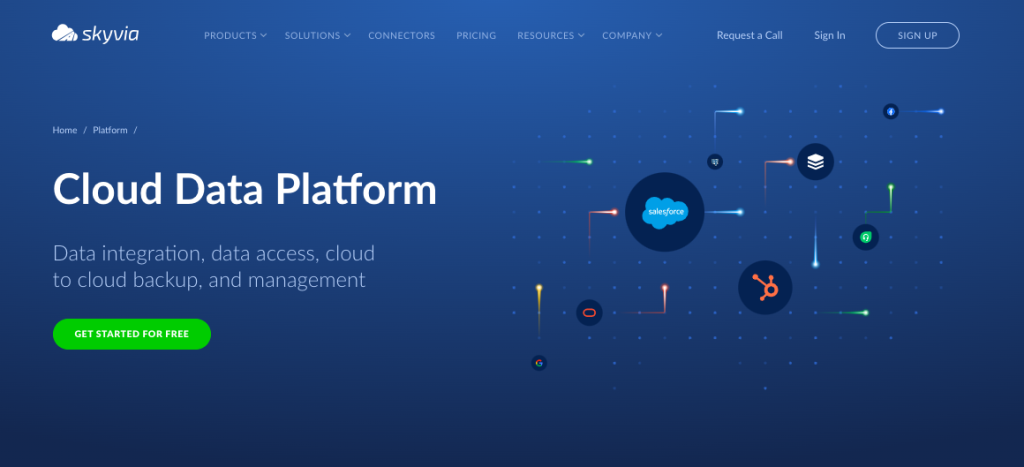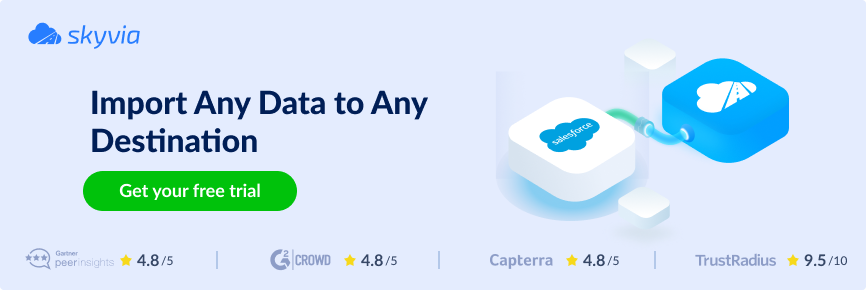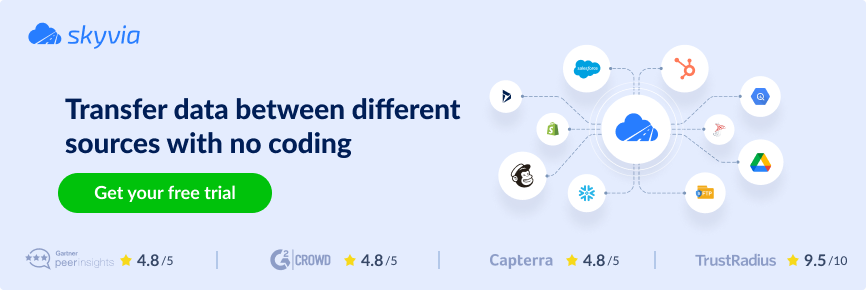Integrating services with APIs is undoubtedly the most popular method for connecting different online services. SFTP integration is another popular way of exchanging data that’s often used by organizations. Given the popularity of these approaches, how to know which one is better for you?
SFTP integration could be compared to an email service, where you can send digital messages and receive a response after some time. API integration is more like a phone call, where you dial a number to contact a person or organization and get an immediate response.
With these metaphors in mind, you now have a vague idea of how both integration approaches work. This article aims to investigate SFTP vs. API integration in detail and give a hint on when each is more appropriate.
Table of Contents
- What is SFTP Integration?
- Setting Up SFTP Integration
- What is API Integration?
- Implementing API Integration
- Main Similarities of SFTP and API
- SFTP vs API: Major Differences
- Final Thoughts
What is SFTP Integration?
Let’s start with file transfer protocol (FTP) to better understand SFTP integration. FTP’s primary purpose is to transfer files between a client and a server. Meanwhile, SFTP does the same, but in a much more protected way, as S stands for secure owing to SSH (Secure Shell) protocol. SFTP also encrypts data before sending it over a channel.
How SFTP Integration Works
The most common SFTP integration instance is the connection between an SFTP server and an application or system. You can send files from other systems to an SFTP server and manage access permissions to those files. The same can be done in the reverse direction when sending files from the server to another system. Overall, SFTP integration is an excellent option for transferring multiple files in bulk.
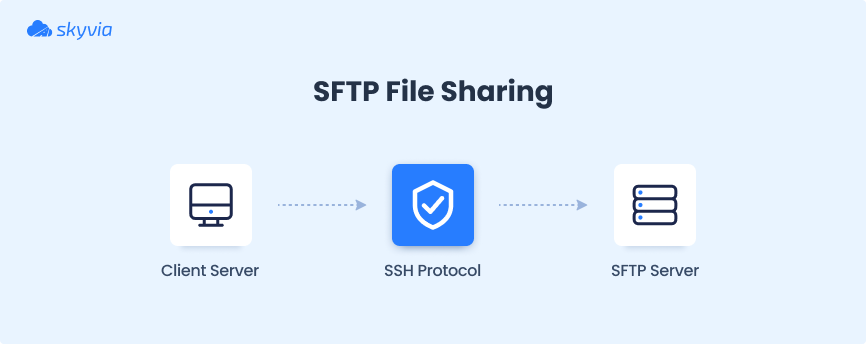
Common Uses of SFTP Integration
There’s a variety of integration scenarios involving SFTP servers, and each business chooses the most suitable one for its particular objective. Here are some typical use cases and popular workflows involving SFTP integration.
- Data backup and recovery. SFTP server is an excellent place for storing data copies from business-critical applications, such as Salesforce, HubSpot, QuickBooks, etc. Businesses can be sure that the data stored on the SFTP server is safe and secure.
- Data sharing. An SFTP server can be a storage pool for sharing reports or occasional files that can be accessed only by authorized stakeholders.
- Copying data from legacy systems. Most applications and systems of the previous generation aren’t compatible with the modern ones. So, one of the proven methods to migrate data from legacy systems is to copy it to an SFTP server first and then integrate it into the destination app.
Benefits of SFTP Integration
Apart from the security it offers for data transfer and storage, SFTP grants other significant benefits. They range from incredible data volumes to the impossibility of modifying data during transit. So, let’s have a look at each of the advantages SFTP integration offers.
- Data integrity. SFTP guarantees that files on the input will have the same content as on the output. It uses hash codes that compare the file versions before and after transit.
- Authorized control. Only authorized users can access the contents of the SFTP server.
- File access control. It’s possible to set permissions for each file on the SFTP server, guaranteeing role-based access.
- Batch transfer. SFTP integration allows users to send large files in bulk.
SFTP Integration Limitations
As any coin has heads and tails, SFTP integration has benefits and limitations. Those aren’t drawbacks but just certain restrictions that prevent SFTP integration from being a suitable and effective solution in certain cases.
- No real-time data access. Since SFTP can operate only batch data, it doesn’t support real-time streams. Data can be sent to an SFTP server or in the opposite direction according to preset time intervals.
- No scalability. Since SFTP supports only point-to-point integration, managing data flows might be challenging as you add more integration scenarios.
- File format restrictions. SFTP integration supports CSV and other flat files, so transferring complex data structures or unstructured data isn’t possible.
Setting Up SFTP Integration
The steps for the integration are similar regardless of the application or database aiming to connect to an SFTP server:
- Generating SSH keys.
- Copying public SSH key to the remote server.
- Establishing and testing connection with the SFTP server.
- Transferring files to and from the SFTP server.
You’ll need to establish an individual SFTP integration point for each application or service. This takes pretty much time and requires lots of manual effort. As a solution, try Skyvia cloud platform, which is a convenient way of connecting an SFTP server with other apps in a unified environment. Skyvia also offers a range of data-related solutions, including data integration, SaaS backup, OData and SQL point creation, workflow automation, and data query.
Skyvia’s Data Integration product offers several zero-code tools for data exchange between SFTP and 180+ other data sources.
- Import is a visual-based wizard that allows users to create ETL pipelines and Reverse ETL pipelines. You can load files from and to SFTP server, apply transformations to data, and configure mapping settings.
- Export is a visual-based wizard allowing users to send their cloud app data to an SFTP server in CSV files.
- Data Flow is a visual pipeline designer with a drag-and-drop interface and a variety of components, allowing users to build more complex data flows involving several data sources and multistage transformations.
You’ll need to perform only several steps to set up an SFTP integration with Skyvia.
- Log into your Skyvia account or create a new one.
- Set up the SFTP connector.

- Set up the integration scenario. In your Skyvia account, go to the +Create New section and select the integration scenario of your choice. For instance, you can send files from an SFTP server to Salesforce and vice versa by selecting the integration scenario (Import, Export, or Data Flow) and setting it up as shown below.
What is API Integration?
Application Programming Interface or simply API is the technology allowing two software programs to communicate and interact with each other. Modern APIs adhere to specific standards (usually HTTP or REST), which makes them self-descriptive and developer-friendly.
APIs have a standardized schema for interaction through a series of requests and responses. For instance, one program sends a request to the API with specific instructions. This request is made in the file format defined by API. Then, the API receives these requests, understands them, communicates with the relevant system or database, retrieves the needed information, and sends it back as a response.
How API Integration Works
The way an API works is usually explained in terms of the client-server architecture, where the application sending a request is a client, and the one sending a response is a server.
APIs can be defined in different ways, depending on when and why they were created. For instance, SOAP APIs use Simple Object Access Protocol where client and server exchange messages using XML. REST APIs define a set of functions like GET, PUT, DELETE, SET, etc. and rely on HTTP for data exchange.
API integration allows businesses to create an ecosystem where various software components work together to achieve business goals. It’s possible to connect multiple APIs to enable data exchange between different applications and systems.
For example, when a suite booking is made via the hotel app, this operation needs to be reflected on the hotel profile on the Booking.com website. This is where API is used to communicate data from the app to the website, so the actual data on room availability is present on both platforms. Such communication ensures data synchronization and prevents the chance of double booking of the same room for the same date.
In fact, API is like an Esperanto language that was artificially constructed more than a century ago to enable international communication.
Common Uses of API Integration
API integration is used almost everywhere today because it tends to improve user experience, content management, etc. Let’s examine some of the most popular business use cases for API integration.
- Inserting payment getaways into e-commerce websites. Such integration is very convenient for customers as they can pay for the services or goods on the platform where they ordered them. There’s a variety of payment getaways, so each e-commerce website can choose credit cards, bitcoins, etc.
- Real-time monitoring of IoT devices. The API integration makes it possible to connect devices to the monitoring applications. This ensures alerts on the system malfunction and enables timely intervention.
- Data integration between CRM and other marketing systems. API enables data exchange between different marketing applications, providing a solid base for targeted marketing campaigns. For instance, you may want to send Salesforce data to Marketo for refining marketing automation approaches.
- Synching inventory stocks. The API integration allows an e-commerce website to exchange data with an inventory management system in the real time. That way, you’ll get the latest information on the stock levels in both systems.
Benefits of API Integration
Along with the tremendous possibilities for connecting services across the web, API integrations offer a range of other benefits for businesses, from automation to customization.
- Real-time data handling. The architecture of APIs enables real-time data exchange. So, the response is sent almost immediately after the request submission.
- Automated data transfers. Automate manual tasks, maximizing productivity and minimizing human error.
- Functionality extension. Benefit from the possibilities that go beyond the standard functionality of your application through the additon of new functionality.
- Data granularity. Request specific details, such as user contact or address, instead of getting the entire customer profile.
API Integration Limitations
Even though API integration seems to be an ideal solution for bringing different software services together, it also has some limitations. Those are NOT drawbacks but rather constraints that become tangible in certain use cases.
- No big data support. If you need to transfer large data volumes, API integration will require more computational resources. This might impact the speed of data transfer and exchange, imposing constraints on real-time conception.
- Dependence on internet connectivity. As APIs primarily rely on HTTP, a stable internet connection is crucial. The integration won’t work properly in case of network interruptions.
- Complexity of integration. Setting up API integration is complex as it requires deep knowledge of the API structure and software functionality.
- Access limitation. If you want to build API integration, you’ll need access to APIs and documentation of the service of interest. Some companies offer open API access, while others provide API only on request.
Implementing API Integration
The steps for API integration are more or less the same for each business case. Here are some fundamental steps that can be a skeleton of the process:
- Define your integration needs. First, understand which services you want to bring to your application or service. That might be a payment gateway or YouTube video player.
- Look into API documentation. The most popular online services have extensive API documentation and guidelines that can be accessed publicly. However, this might be different for niche services. So, carefully explore the API documentation and see whether you can get support from the application provider.
- Start integration. Obtain access to API keys and ensure secure management for them. Start creating HTTP requests to access API endpoints using the official API documentation.
- Execute testing. Check whether your application successfully communicates with the API and retrieves the needed data. Ensure your app can handle errors and provide clear messages to users.
Main Similarities of SFTP and API
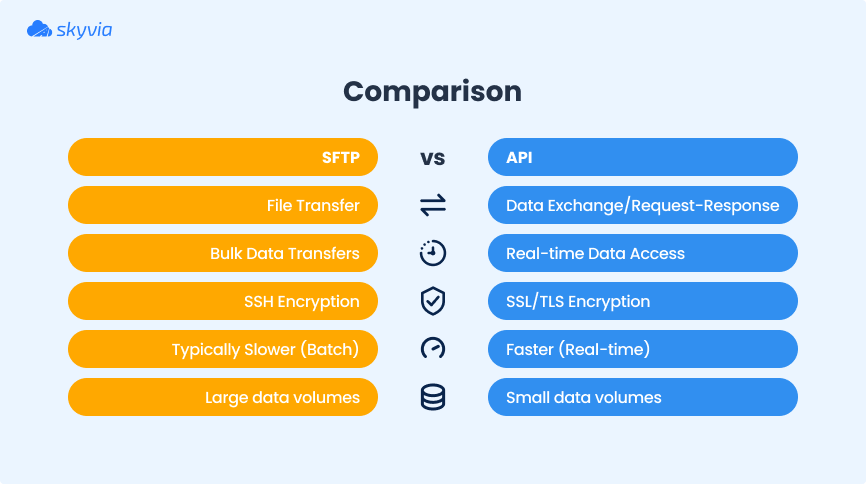
After having explored SFTP and API integrations, it’s time to compare them. This analysis will help you understand which method is better for a specific business use case.
So, here are some things both SFTP and API integrations have in common:
- Secure data transfer. Both approaches employ security protocols and features to protect data on transfer.
- Automation options. SFTP and API integrations noticeably reduce the manual effort and the probability of human error.
- Robust error handling. Both methods show an advanced approach to error handling by providing detailed messages to users.
SFTP vs API: Major Differences
Let’s see the key differences between SFTP and API. Here are some of the notable and distinctive ones:
- Data access frequency. API integration allows a service to request the needed data and receive it as soon as needed, guaranteeing real-time data exchange. Meanwhile, with SFTP integration, users can send or receive access data only at specific intervals.
- Data volumes processed. SFTP works on batches and can handle large data volumes. Meanwhile, API usually operates on granular data of small sizes.
- Scalability. As an organization grows, it might be more difficult to handle multiple SFTP integrations, each for a different data source. API integration offers a greater degree of scalability for business.
- Maintenance cost. SFTP integration is usually associated with lower implementation and maintenance costs. APIs usually require high investment costs, especially when there’s a need for high-frequency API calls, support, and advanced features that go with highly paid pricing plans.
- Flexibility. APIs ensure customized data interactions, whereas SFTP follows a straightforward transfer process.
- Configuration complexity. API integration configuration is a time-consuming process that requires high technical expertise. SFTP integration setup requires SSH key pair generation and exchange, communication with a remote server, and not much coding. To simplify things, use universal data platforms like Skyvia to set up a no-code SFTP integration at a low cost.
Final Thoughts
Let’s say that SFTP and API integrations have different target audiences. SFTP integration is more suitable for businesses that aim to send files in bulk over a secure channel at certain intervals in time. Meanwhile, API integration is more about the near real-time data exchange between software services.
| SFTP integration is suitable for: | API integration is suitable for: |
|---|---|
| – Data archiving – Regular backups – Sharing flat files with stakeholders or partners. | – Extending the native functionality of proprietary applications – Data exchange in real time |
Companies with limited IT resources and expertise could also benefit from SFTP integration since the setup process is simpler than that of APIs. Things become even more accessible with data integration platforms like Skyvia. It allows you to connect an SFTP server to 190+ apps, databases, and data warehouses for data integration.
